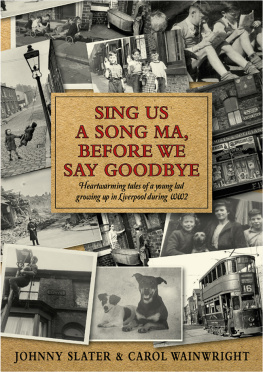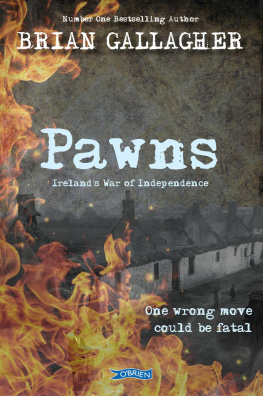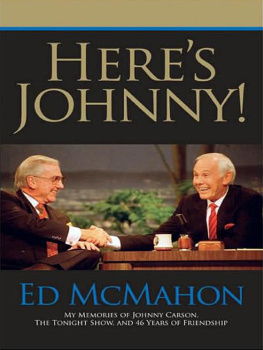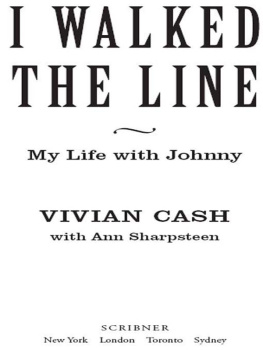
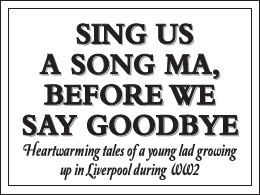
JOHNNY SLATER
and
CAROL WAINWRIGHT

First published 2018
Copyright Johnny Slater and Carol Wainwright 2018
The right of Johnny Slater and Carol Wainwright to be identified as the author of this work has been asserted in accordance with the Copyright, Designs & Patents Act 1988.
All rights reserved. No part of this book may be reproduced, stored in a retrieval system, or transmitted in any form or by any means, electronic, electrostatic, magnetic tape, mechanical, photocopying, recording or otherwise, without the written permission of the copyright holder.
Published under licence by Brown Dog Books and
The Self-Publishing Partnership, 7 Green Park Station, Bath BA1 1JB
www.selfpublishingpartnership.co.uk
ISBN printed book: 978-1-78545-287-1
ISBN e-book: 978-1-78545-288-8
Cover design by Kevin Rylands
Internal design by Tim Jollands
Printed and bound in the UK
CONTENTS
PROLOGUE
When asked about Liverpool most people can easily name our famous football teams, Everton and Liverpool. Many know of Liverpools fascinating maritime history. And who doesnt know that Liverpool is the birthplace of the legendary Beatles? Four talented musicians who changed the face of music forever, and who immortalised The Cavern, a small club tucked away in lively Matthew Street in the towns busy centre.
No-one could fail to recognize the warm and humorous voice of a Scouser. Love, strength, and a kind heart are the key qualities of Scousers. Singers, comedians, footballers, actors and actresses, Liverpool births them all.
Not all Scousers are world famous but rest assured, every Scouser is born with a rare and inspiring gift. We can talk the hind leg off a donkey but when something needs doing we get up and get it done. When a neighbour needs help, we pick up a brush and scrub out, without question. No need for thanks or recognition. We help each other out. We serve because we want to. This remarkable trait is natural. Its in our blood. We make the most of our lot with a song in our heart and a smile on our face. This claim is made proudly, unashamedly, and without arrogance because its true. A Scouser will find beauty in anything, even when its not pretty, in good times and bad. We look after each other and count our blessings. We may not have much but what we do have we share and we are thankful. Its as simple as that. Little things mean a lot and we are grateful for whatever cards life has dealt us.
Liverpool today may well be just another port that others pass through on their way to sunnier and exotic destinations. Travellersperhaps only glimpse the northern banks of the River Mersey. How many people notice the shipping and commerce in this thriving and busy port, or witness the countless containers carrying cargo all over the world? The rolling waves of the Mersey are still relied on even if its once thriving Victorian heydays have long since passed. Liverpool was the busiest port in the country during both world wars and its status as a port city has attracted a diverse population, drawn historically from a wide range of peoples, cultures and religions, more particularly, from Ireland and Wales.
Overlooking the River Mersey and dominating one of the worlds most famous waterfront skylines is the Royal Liver Building at the Pier Head. Silently perched atop its roof are Bella and Bertie, the Liver Birds, each carrying a branch of laver seaweed. These iconic birds are made from copper and stand eighteen feet tall with a wingspan of twenty-four feet. Various mythologies surround these legendary creatures, who stand facing away from each other. One such legend has it that the female bird looks out to sea making sure those who sail the waters arrive home safely while the male bird looks towards the city to protect its citizens. Should the birds ever turn to face each other, Liverpool will no longer exist.
On the opposite side of the river is Liverpools sister port, Birkenhead, and beyond that are the small seaside towns of the Wirral peninsular. Further still is the North Wales countryside, home to many evacuees during World War Two.
Kirkdale is an area of flat land on the banks of the River Mersey, formerly consisting of sand hills, for which this part of the Sefton coast is still well known. It is one of the oldest coastal settlements, pre-dating Liverpool itself. Kirkdale Road was once an important route into Liverpool when the emerging town became a market destination for traders and producers across Lancashire. In 1699 Liverpool became a parish in its own right separating from nearby Walton on the Hill a separation enforced, according to the historybooks, by the inability of parishioners to resist the distraction of the Kirkdale Alehouse on their way to church
Kirkdale was still mostly rural at the beginning of the nineteenth century and was only half-developed by around 1850. But new roads were being added on to Liverpools northern fringes to cater for the growth in businesses spreading out from Dale Street and Castle Street.
As Liverpools wealth increased, the richest merchants looked for room to build the large houses that would reflect their status in society. Kirkdale was one of the first areas to become a suburb, and a fashionable one at that. The coast to the west of Kirkdale was, before the arrival of the docks, popular as a destination for bathers and those seeking fresh air. Later, when the Wellington, Huskisson, and Sandon Docks were built, Southport replaced Kirkdale as the preferred holiday destination for discerning Liverpudlians.
A village so close to the ambitious and growing town of Liverpool could not expect to stay rural for very long. As the Industrial Revolution approached, the area of Kirkdale became increasingly more built-up, while two significant nineteenth-century developments put paid to its days as a semi-rural suburb. The first was the Leeds-Liverpool Canal, which brought trade and goods into North Liverpool and immediately attracted a huge number of businesses to its terminus around Leeds Street. The second was the Liverpool & Bury (later the Lancashire & Yorkshire) Railway which opened in 1848. This not only encouraged even more industry into the area, but also helped to transform the mellow atmosphere from one of cut grass and cow dung to a smoky, sooty climate.
Kirkdales proximity to the docks made it a great place to build houses for the thousands of casual workers who were too poor to live more than walking distance from their potential employers. As Liverpools growth reached its peak in the late Victorian period, a grid-iron pattern of terraces crept along the landscape. The richer classes from the clerks all the way up to the shipping line owners moved further away fromthe town centre. The clerks tended to move to Anfield and Walton while the richest built new villas in the countryside around Woolton and West Derby, or north of Bootle. Kirkdale was one of the earliest suburbs to be incorporated into Liverpool itself, in 1835. The swathes of unsuitable housing which blighted places like Kirkdale in the twentieth century were the inevitable result of unscrupulous landlords throwing up as many properties as possible for the lowest cost.

